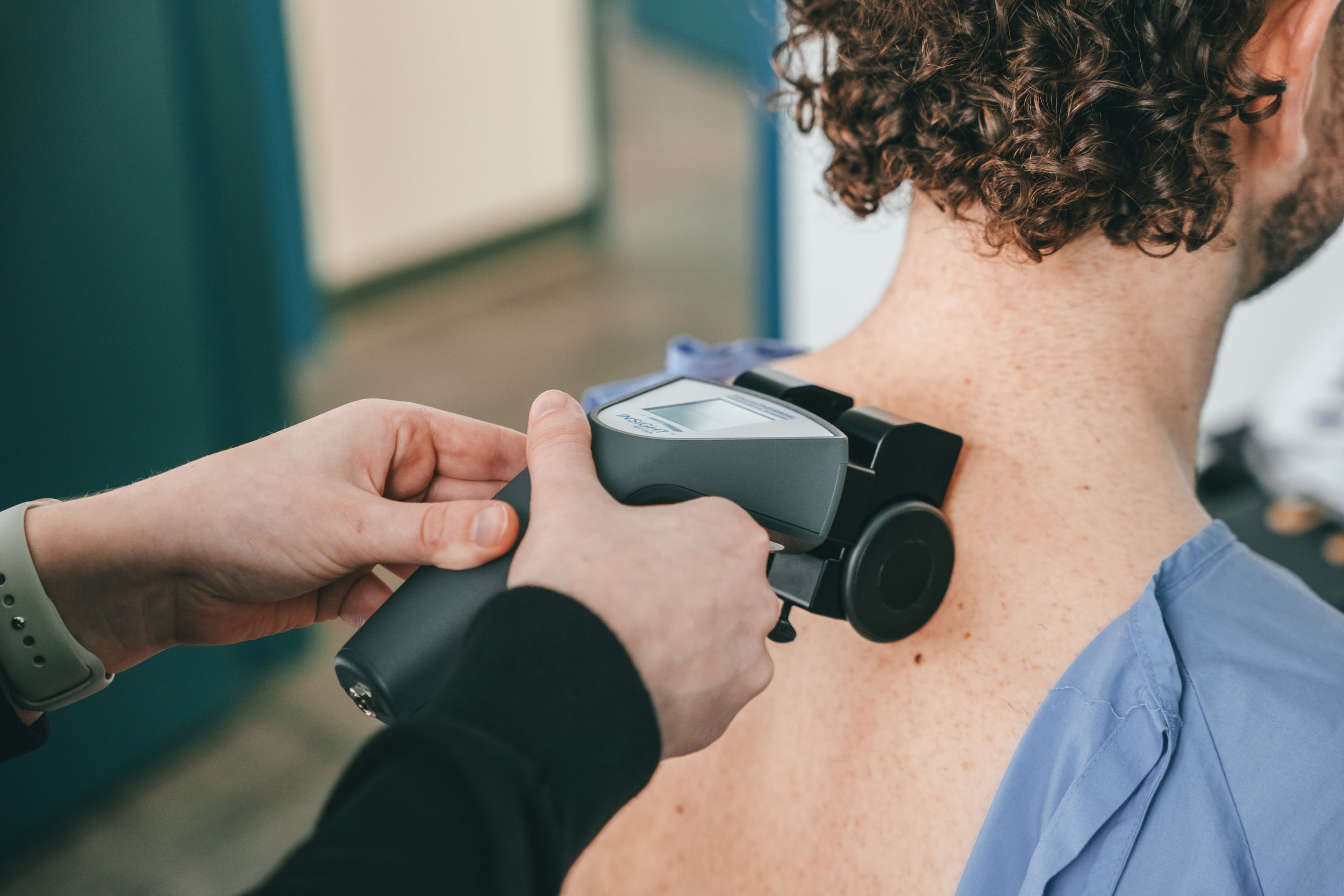
INSIGHT™ Scanning Technology
Scanning the spine and nervous system for patterns of stress and subluxation has been a foundational part of the chiropractic examination for decades.
Insight technologies help us visualize the impact of damaging stress on the body and the power of being adjusted.
Chiropractic is founded on the basic principles that a body’s ability to self-heal and self-regulate is under the control of an adaptive, functioning nervous system. The capacity of the nervous system to respond efficiently and appropriately is directly related to the body’s ability to adapt. Health is correlated with the management of your body’s stress resources.
Over time, as unresolved stressful events reoccur, the amplitude and symmetry of the autonomic nervous system can become diminished. An unbalanced and distracted autonomic nervous system has little reserve to handle ongoing stress. In other words, its Adapative Reserve is lowered overall.
The neuroPULSE measures the interbeat intervals of a resting heart rate and produces a metric known as HRV. Where a person plots on the graph represents how much reserve that patients has to adapt to daily and eventful stressors.
Our chiropractor uses this technology to track your adaptability to stress over time, analysing the neurological impact of your chiropractic adjustments.
NeuroPULSE:
Reserve
Dr Roger Sperry won the Nobel prize in medicine is credited with determining the “cost” of living with gravity. To remain uptight and move efficiently costs the body a huge percentage of neuromuscular energy which in turn drains the body’s energetic reserves. When a nervous system is compromised by physical, emotional or biochemical stresses, the natural neuromuscular response is to protect causing muscles to fire and contract. When the body is in a state of protection, joints lock, postures become flexed and rigid. This causes the body to become dysponetic or energy inefficient.
The neuroCORE measures surface EMG (electromyography) which allows us to map the muscle activity and balance from side to side up the spine. This helps us to determine postural and neuromuscular exhaustion and tension and monitor changes over time.
NeuroCORE:
Energy & Exhaustion
Thermogenic scanning detects patterns of unbalanced temperature regulation. The spinal-neural ganglia that innervates the capillaries on either side of the spine and controls temperature is the same nerve that goes on to communicate with your internal body, organs, and glands.
At each spinal level, there is potential for stress to impact the autonomic portion of the spinal nerve causing segmental or regional dysautonomia.
This test gives us insight to the DEEPENING effect of spinal subluxations on the regulation of our body.



